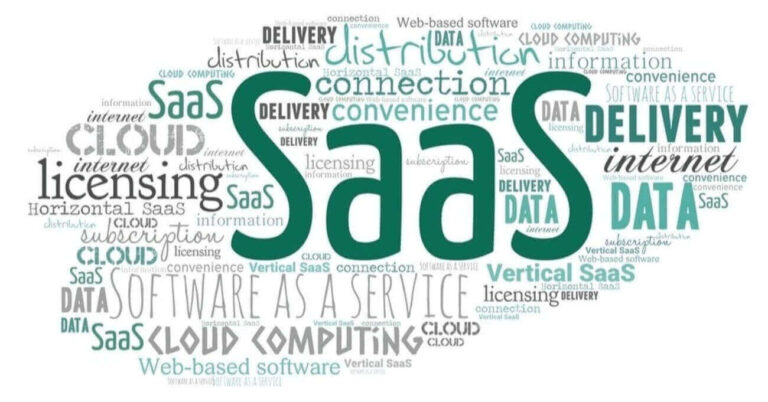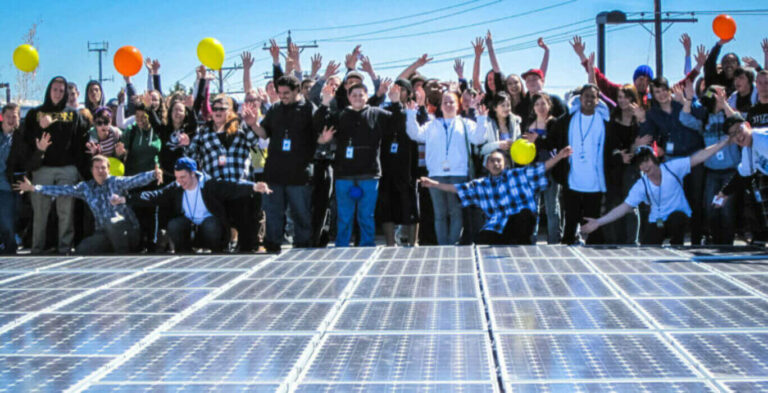The SaaS platform business model (With examples)
Wondering how this SaaS stuff works? Come closer as we go through the mechanics of the Software-as-a-Service business model

SaaS stands for Software as a Service. And it is a subscription-based software offering, where users pay to use the software for a specific period, instead of buying it outright.
This model grew out of the internet. And the recent availability of cloud-hosting services has also helped to boost the business model.
A SaaS business comes with many advantages for both the entrepreneur and his clients. So it’s no wonder how quickly so many SaaS services are popping up and growing.
Following is a closer look at this business model that has taken over the web.
The SaaS Business Model
The Internet has disrupted many industries, and this even includes the traditional software publishing business.
Where a vendor had to perfect his program first, then distribute it far and wide before. All you need today is a minimally functional product or even a beta to go into business. Then you develop more features as the need arises.
Faster broadband, more powerful computers, and cloud computing have combined to make this new business model a reality. But it is not all rosy, as the competition is getting fiercer by the day. So entrepreneurs need to come up with better innovations to keep going.
Here are some statistics:
- 51% of American companies relied on SaaS for 80% or more of their software needs in 2018
- 73% of companies plan to run their business entirely on SaaS
- Global annual SaaS revenue has grown to the $100 billion range
- Over 80% of small companies have invested in one SaaS solution or the other
- Small and large organizations all use SaaS solutions
How SaaS works
The major feature of a SaaS solution is that the provider offers the software as a service. So the client needs no upfront purchase or extra hardware to use it, except internet access.
The vendor maintains the software, databases, security, delivery, and updates. This is often done using scalable cloud services that make it easy for new players to enter the market. Most SaaS businesses are also available on multiple devices, including web, desktop, watch, and smartphone apps.
In return, the customer pays a monthly subscription fee to access these services. Some of these subscriptions are per user, while others depend on the services used. In general, most businesses find it more affordable to use SaaS solutions than outright software purchases.
Pricing approaches
The Internet’s level playing field has created lots of competition in the software industry. So, entrepreneurs either have to innovate or watch their businesses die.
This innovation is also evident in the SaaS field and down to pricing strategy. Here are the most popular strategies employed by most SaaS offers.
- Per-user pricing – Google does this with its Workspace, which charges $6 per user. This strategy has its advantages, such as being easy to remember or to work out the price for x users. Many companies combine this strategy with others, such as freemium, to create a hybrid pricing model.
For disadvantages, it limits the number of users from an organization that can use the service though, as each extra user costs more money. - Freemium – This is a service that is free for basic use, but then incurs costs when you need more features. The freemium pricing model is great for attracting new users and getting them to see how your system works.
Google and Zoom both offer freemium services, for instance. And when combined with another pricing strategy, the freemium strategy can create successful ventures.
You will need to consider server costs though, and then create a hybrid strategy to cover it. Because many startups have failed from offering free services with no money to pay for server costs. - Flat rate – With flat-rate pricing, the SaaS company offers all its services at a fixed price. The advantage is being easier to sell to potential customers, as opposed to the often confusing pricing models of many SaaS offers.
Its downside, however, is that it limits the company’s profitability. You cannot charge more for higher-usage customers, who consume more resources. Some companies combine it with the freemium model. So, you either use the system for free or pay a flat rate for unlimited usage. - Tiered/per feature – Here, a company offers its core and extra services in different packages, and the customer is allowed to choose. The more features you choose, the more it costs.
This approach makes it easy to appeal to a wide range of clients and budgets. And the company can also upsell the larger packages easily, once the customer starts doing well.
It is a very fair pricing strategy because customers only pay more when they use more features from a vendor’s software. This value and price co-relation is usually a perfect approach for most SaaS offerings. - Usage pricing – With this model, the SaaS company only charges the customer based on what he or she used in the given period. This works more like pay-per-view television or cell-phone billing and can be an effective method.
The pricing can be based on time, data usage, CPU compute usage, API usage, or any other metric that makes sense for the application on offer.
Benefits of the SaaS platform business model
The SaaS platform business model comes with lots of benefits for both software vendors and clients. And this makes it very attractive for everyone involved. Some of these major benefits are as follows:
- Wider Reach – You can reach all types of customers with a SaaS offering because there are only a few requirements for the service. These are a browser and an internet connection. This means that you can reach both small-timers for freemium services and larger companies with heavy budgets.
- Faster Scaling – One great feature of this business model is that it is much easier to scale operations, once you’ve worked out your offering and customer base. The availability of cloud-computing services also makes this easier.
- Lower Costs – This goes both ways, as vendors and customers alike profit from this model. Using a cloud-hosting service, for instance, means drastically fewer infrastructure costs for the vendor. These savings are then passed on to the customer as lower subscription payments, which is great for the customer because there is also no huge upfront investment.
- Easy upgrades – Upgrading the software is easier, since the vendor handles everything. Most users won’t even know what’s going on until they log in and see a new feature available. This is way better than having to buy a new version on a CD and spending the next two hours trying to upgrade the software that your company runs on.
- Recurring Revenue – This is the best part for the vendor, as it eases the mind, knowing that you are constantly getting paid. The payment has to be earned through quality features and good customer service though. This is because it is still possible for a paying customer to leave a service if he does not feel like he is getting a fair value.
Cons of the SaaS model
You will also find certain disadvantages of using this business model and they include:
- Overcrowding – Yes, everyone and their grandma seem to be getting on the SaaS bandwagon. And there is a rapid increase in recent times. The bad news is that some Startups will lose out. While the good news is that more competition means better value for customers. So, the entire world gains in the end, per se.
- Long-term commitment – While a subscription-based service brings in recurring revenue, running the business is still not easy. You always have to be there for your customers, for instance, pay attention to their requests, implement new features when necessary, and do lots more to keep things moving.
SaaS business growth stages
You can categorize most SaaS platform businesses into one of three growth stages. They are the early stage, the rapid growth stage, and the mature stage. Here is a closer look at each:
- Early Stage – This is the initial stage, featuring the product creation, finding the first customers, testing out stuff, and so on.
- Growth Stage – At this stage, more customers are adopting the product, and this can happen quickly. This is also the stage where the venture will need some form of major investment to keep up, usually from venture capital firms or angel investors.
- Mature Stage – At this stage, the company has proven itself and its product. And this usually means a steady MRR or ARR inflow. Outside investments might still come in, but they are usually geared at buying out the competition or expanding into foreign markets.
Important SaaS metrics
Data is important for the success of any SaaS business. So, it is necessary to collect as much data as possible for analysis. There are lots of metrics to measure and this depends on the type of offering and the target audience.
However, here are some major metrics that every SaaS venture needs to pay attention to.
- Churn Rate – This shows you the percentage of customers leaving the business. It is best at 5% or less. You calculate the Churn rate with
(# of churned customers / total customers at period begin) x100. - MRR & ARR (Monthly or Annual Recurring Revenue) – This refers to how much revenue you are expecting for the given period, either monthly or annually.
- CAC (Customer Acquisition Cost) – The total amount of money it costs the enterprise to get a new paying customer. This can make or break the business.
- CLV (Customer Lifetime Value) – This one refers to how much money you can make from one customer, while they are subscribed to the service. It helps in determining a good CAC.
- CRR (Customer Retention Rate) – This shows you the percentage of customers that continue to pay to use your software. You calculate it using
(Paying customers/total customers at period begin)x100. - ARPA (Average Revenue Per Account) – The total income derived from a single client. You calculate it by dividing the total MRR by the total number of clients.
Popular SaaS service types
There is no limit to the SaaS approach for transforming businesses and industries. One just needs some level of creativity to get going. But here are the most popular service types that currently run on a SaaS model:
- CRM (Customer Resource Management)
- ERP (Enterprise Resource Planning)
- Project Management
- Accounting
- Time Tracking
- Billing Solutions
- Communication platforms
- E-commerce platforms
Example of Popular SaaS companies
Following are some of the most popular SaaS companies and services out there:
- Google Workspace – Available for free and for $6 per month
- Microsoft 365 – Office software is now available on the cloud
- Slack – Popular enterprise collaboration platform
- Salesforce – One of the earliest SaaS ventures
- Hubspot – Great solution for marketing and marketers
- Twilio – Develop VoIP, SMS, and other apps easily
- DocuSign – Handle legal documents easily
- GitHub – Cloud-based repository for developers
- GoToMeeting – Online video meeting solution
- Shopify – Cloud-based e-commerce solution for SMEs
Conclusion
You must have realized how wide the SaaS-platform business model can reach by now. There are countless opportunities out there and creative developers seem to be coming up with new creations every month.
You should also keep in mind, that a business venture is still a venture. So, things may not always go smoothly. But when played right, the subscription-based software service model has shown its power in transforming many industries for good.





